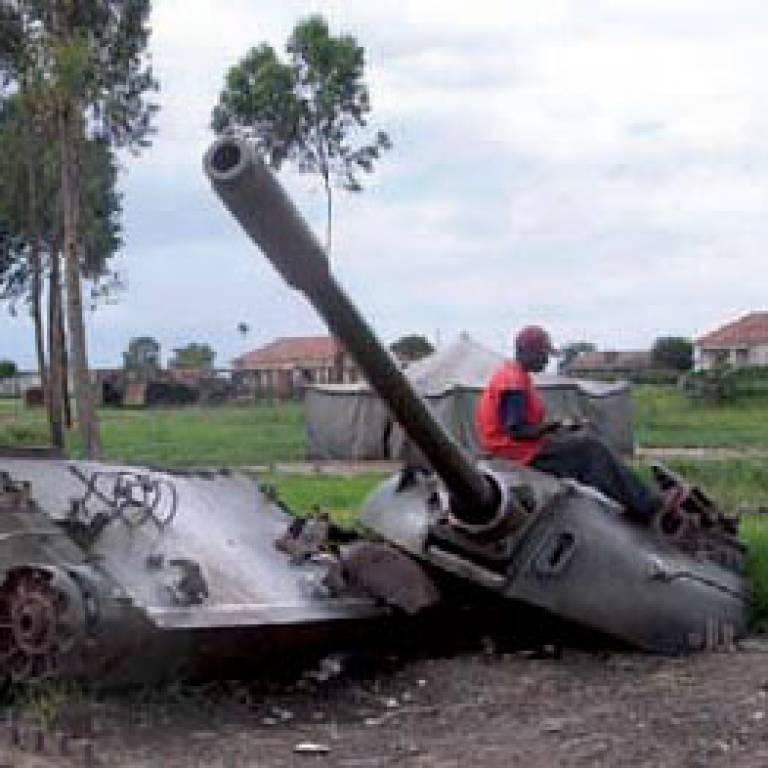Study: vast majority of adolescent deaths occur in low and middle-income countries
11 September 2009
Links:
 ucl.ac.uk/ich" target="_self">UCL Institute of Child Health
ucl.ac.uk/ich" target="_self">UCL Institute of Child Health
A study of global death rates for young people aged 10-24 years shows that the vast majority of deaths in this age group (97%) occur in low- and middle-income countries.
Furthermore, the current focus on HIV/AIDS and other infectious disease such as tuberculosis is an insufficient response since two in five deaths in this age group are due to injuries and violence.
The results are reported in The Lancet in an article written by Dr Russell Viner from the UCL Institute of Child Health and colleagues from Australia and Switzerland.
The researchers used data from the 2004 Global Burden of Disease study and mortality estimates developed for the 2006 World Health Report.
Patterns of mortality were investigated by WHO region, income status and cause in age groups from early adolescence (10-14 years), through late adolescence (15-19 years) to young adulthood (20-24 years).
High-income countries represented one category, while the low- and middle-income countries were spread out according to WHO regions (Africa, Americas. Eastern Mediterranean, European, Southeast Asia, Western Pacific).
Causes of death were categorised as:
- Group I - comprising group 1A, maternal deaths, and group 1B, communicable diseases including nutritional conditions
- Group II - non-communicable disease
- Group III-injury including traffic accidents, fires, drowning, self-inflicted injury, and violence and war
The researchers found that 2.6 million deaths occurred in young people aged 10-24 years in 2004 (from a worldwide population of 1.8 billion people in that age group). Of those, 2.56 million (97%) were in low- and middle-income countries.
Nearly two thirds (1.67 million) were in sub-Saharan Africa and Southeast Asia, despite these regions containing 42% of 10-24 year olds. High-income countries had only 3% of the deaths, despite having 11% of the population in this age range. Death rates were higher in young adulthood than young adolescence, but reasons varied by region and sex.
Globally, death rates more than doubled from age 10-14 years (95 deaths per 100,000 population) to 20-24 years (224 deaths). Maternal conditions (which comprised several individual categories) were a leading cause of female deaths at 15%. HIV/AIDS and tuberculosis contributed to 11% of deaths.
Traffic accidents were the largest cause of deaths for both sexes combined (10%) and accounted for 14% of male and 5% of female deaths. Other prominent causes included violence (12% of male deaths) and suicide (6% of all deaths).
The authors said: "Mortality rates in low-income and middle-incomes countries were almost four-fold higher than were those in high-income countries, a difference that was particularly pronounced for young women."
They added that in some regions, including Africa and southeast Asia, group I causes of death rise in adolescence and young adulthood and thus are of major importance.
They said present global health policies for the prevention and management of HIV and other infectious diseases, and provision of access to information and services for sexual and reproductive health, would probably have major beneficial effects.
But they concluded: "However, even in these regions, tuberculosis and lower respiratory tract infections cause more youth deaths than does HIV/AIDS, but have not yet attracted a similar response in policy.
"Importantly, group I causes of death were not prominent in most low-income and-middle-income countries. In the western Pacific and eastern Europe, although overall death rates were increased, patterns of death resembled those reported in high-income regions, suggesting a need for very different strategies."
Image: Two in five deaths of people aged 10-24 are due to injuries and
violence. Many of the poorest countries, such as Angola, are ravaged by
conflict
UCL context
Great Ormond Street Hospital is the country's leading centre for treating sick children, with the widest range of specialists under one roof. With the UCL Institute of Child Health, it is the largest centre for paediatric research outside the US and play a key role in training children's health specialists for the future.
Related links:
Researchers pioneer safer bone marrow transplants for sick children
UCL team wins £500,000 grant to develop synthetic artery
 Close
Close

